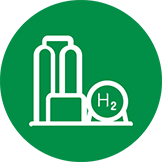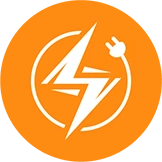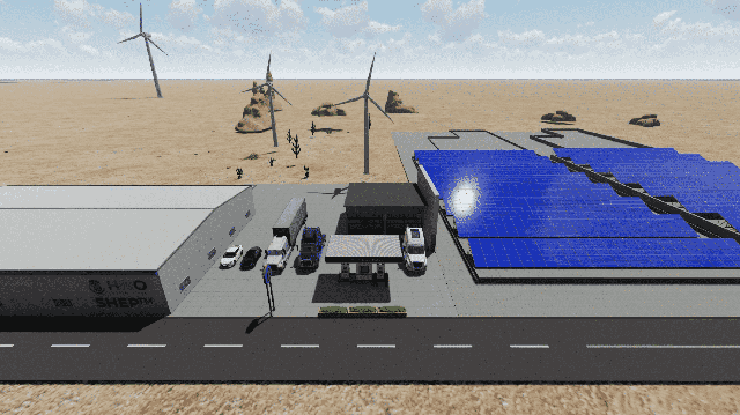Use Case: Green Hydrogen Production with Solar and Wind Energy
Hydrogen, produced using renewable energy sources, is a crucial component in the transition to clean energy infrastructure and a sustainable reality.
Project Details
This project explores the implementation of the Scalable Hydrogen Energy Platform (SHEP) and the Compact Hydrogen Refueling Station (CHRS) powered by solar and/or wind energy. The developer aims to take advantage of renewable energy generated at low costs to produce, store, and dispense fuel cell grade green hydrogen.



Production

Refueling

Electricity

Storage
The proposed facility is located in a region with abundant sun and/or wind, ensuring high renewable energy generation.
While our scalable hydrogen production platform is a fraction of the size of traditional hydrogen facilities, additional acreage is needed to support 1.5MW of solar and wind energy.

Key Benefits

Optimal Use of Excess Energy
Convert excess solar and wind power to hydrogen energy, reducing waste and enhancing profitability.

Diverse Revenue Streams
Generate additional revenue through the sale of hydrogen for transportation, commercial offtake, industrial processes, and more.

Energy Resilience
Store hydrogen and pair with fuel cells to provide power during low production periods, increasing energy independence.

Incentives and Subsidies
Increase profitability with hydrogen-focused government incentives such as the Clean Hydrogen Production Tax Credit 45V in the United States.
Market Opportunities
The market opportunities for green hydrogen are diverse and quickly expanding in many segments including:
Fact: the green hydrogen market is expected to grow by 53% CARG from 2023-2029.
SHEP can produce 500kg per day, 3,500kg per week
Technology and Features
Electricity Source
Utilizes 1.5 MW of renewable energy such as solar and/or wind to power the facility.
Electrolyzer Technology
Employs state-of-the-art alkaline electrolyzers to efficiently convert water into hydrogen energy.
Storage and Refueling
Implements high-capacity storage tanks and refueling stations to supply hydrogen to various applications and industries.
Battery Systems
Integrates battery storage systems to store excess solar energy for use during non-sunny periods.
Key Milestones
The planning and design phase involves outlining the facility's layout, including electrolyzers, storage units, and refueling stations.
Results and Impact
Considerations
Maintenance and Operation
Maintain the efficiency and operation of system components including the electrolyzer, compression, and storage systems.
Project Financing
Evaluate the economic feasibility and funding for the project.
Regulations and Certifications
Navigate regulations and obtain necessary approvals for hydrogen production and distribution.
Future Outlook
SHEPTM has the ability to scale up and integrate additional technologies that increase hydrogen production capacity to meet rising demand. The growing market demand for hydrogen in many sectors will drive further development and investment in the project.